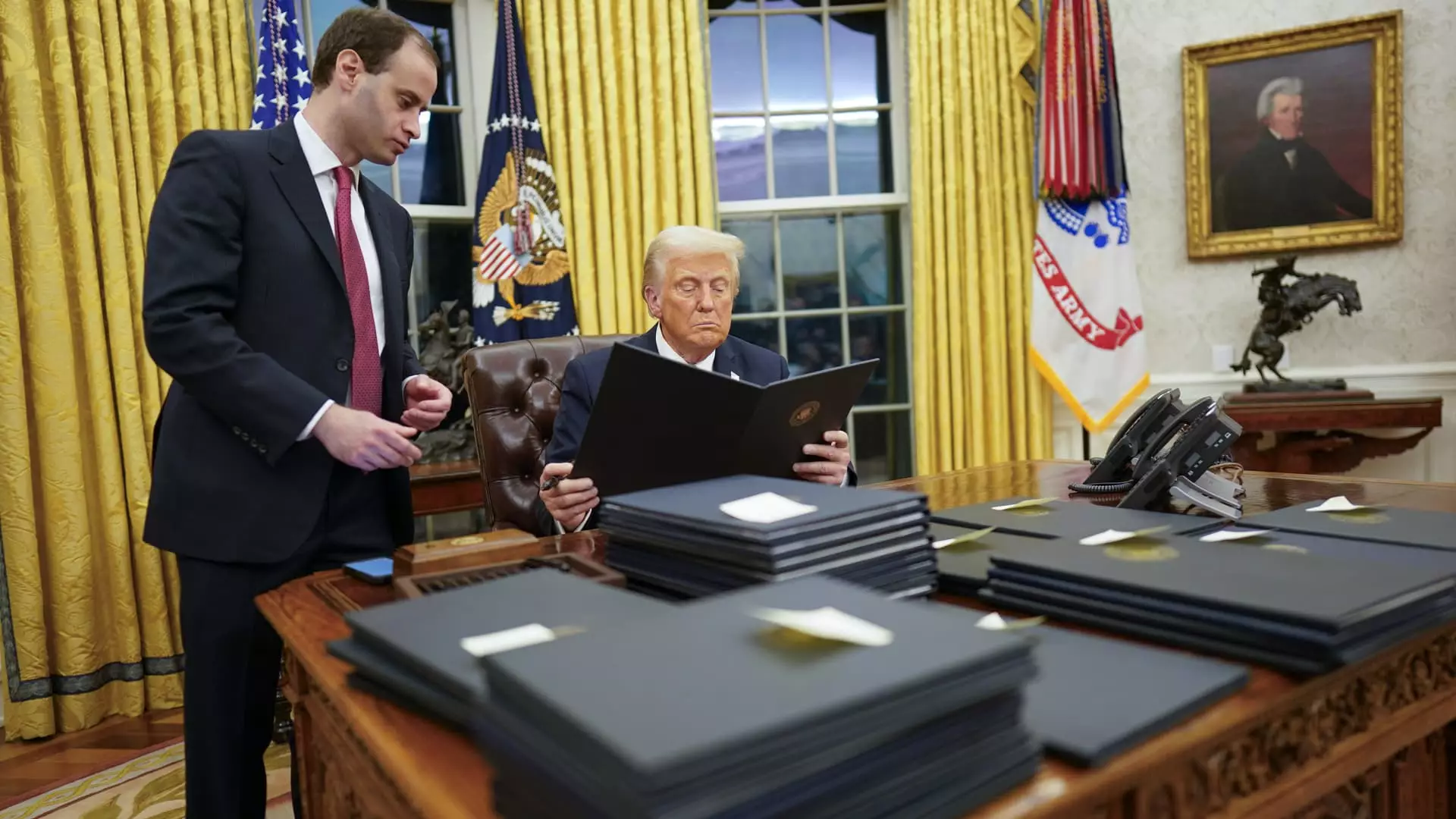President Donald Trump’s initial days in office sparked a significant pivot in the United States’ energy policy, veering sharply towards fossil fuel production while simultaneously dismantling various climate-related initiatives established by the previous administration. This article delves into the consequences and implications of Trump’s approach, examining the potential impact on the energy sector, public sentiment, and the ongoing debate surrounding climate change.
Upon taking office, Trump wasted no time in making his intentions known regarding U.S. energy production. Through a series of executive orders, he emphasized a commitment to boosting fossil fuel output, explicitly stressing the need to free up domestic energy resources. While the symbolic value of these actions is undeniable, the tangible effects on the energy landscape remain to be seen. Key players in the oil and gas industry, such as Exxon and Chevron, have expressed skepticism regarding significant shifts in production levels, grounding their assertions in market-driven realities rather than political maneuvering.
Despite the U.S. retaining its status as the world’s leading oil and gas producer, skepticism among corporate leaders suggests a complex relationship between policy and real-world application. This conundrum raises the question of how effective top-down governmental interventions can be in reshaping industry dynamics, especially when large corporations prioritize profitability and market trends.
Trump declared a national energy emergency shortly after taking office, articulating concerns over an “inadequate and intermittent energy supply.” This declaration aligns with predictions of rising electricity demand stemming from technological advancements, most notably the growing requirements of artificial intelligence and domestic manufacturing.
However, the backdrop of the national energy emergency is not solely an economic narrative; it transcends into discussions about national security. The primary electricity grid operators, like PJM Interconnection, have raised alarms about future electricity shortfalls, primarily due to the rapid decommissioning of coal plants not being matched by new energy capacity. Trump’s various directives for federal agencies to utilize any lawful powers to facilitate energy production may be perceived as an urgent response to these forecasts. Yet, the potential environmental repercussions of such an aggressive fossil fuel development strategy cannot be overlooked.
One of Trump’s most controversial early actions was initiating the process to withdraw the United States from the Paris climate agreement. The intentions behind this move were rooted in prioritizing domestic energy production over international commitments to curb climate change. Critics argue that this decision not only undermines global cooperative efforts to mitigate climate impacts but may also stymie the U.S.’s potential leadership role in renewable energy technologies.
The Paris accord represents a vital global initiative aimed at combating climate change by limiting global temperature rise. By rescinding the U.S.’s commitment, Trump is sending a clear message that fossil fuel development will come at the expense of international climate action, which could have far-reaching effects on global warming efforts and international relations within the environmental sphere.
Trump’s presidency has been marked by efforts to roll back various regulatory frameworks. Following his directives, significant actions have included revoking the Biden administration’s ambitious electrification goals and banning exploratory drilling bans in U.S. coastal waters. These regulatory reversals signal a wholesale embrace of fossil fuels without a clear framework for sustainable energy development.
Moreover, Trump’s focus on accelerating liquified natural gas (LNG) projects aligns with broader ambitions to position the United States as a dominant energy supplier. However, whether Trump’s administration has the authority to sustain these initiatives is susceptible to judicial challenges, considering prior pushbacks against similar moves.
In a move that reflects a pronounced pivot away from clean energy, Trump issued an order halting the disbursement of funds tied to the Inflation Reduction Act. This law played a pivotal role in supporting the transition towards cleaner energy alternatives, including electric vehicles and renewable energy infrastructure. By pausing funding for initiatives like electric vehicle charging stations, Trump’s administration risks stagnating progress in the clean energy sector, fostering a potential backlash among environmentally-focused voters and stakeholders.
The actions undertaken during the early days of the Trump administration represent a critical juncture in U.S. energy policy, pitting fossil fuel interests against the pressing realities of climate change. While the intent to prioritize energy independence and economic growth is apparent, the long-term implications of these decisions may provoke significant discussions around sustainability, environmental responsibility, and future energy trends both domestically and globally. As the nation contemplates its energy future, the balance between economic ambition and ecological stewardship will undoubtedly shape the path forward.


Leave a Reply